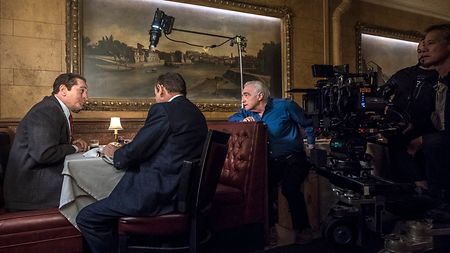In telling the story of American labor union official and hitman Frank Sheeran, "The Irishman" spans the entire second half of the 20th century and offers a solution to the mystery of who killed Teamster boss Jimmy Hoffa in 1975. Starring Robert De Niro, Joe Pesci and Al Pacino, the film utilizes digital de-aging techniques to make the characters appear younger for the earlier sections. Rodrigo Prieto speaks here about mixing analog and digital capture, using a package of ARRICAM Studio and Lite, RED Helium and ALEXA Mini cameras, with Cooke Panchro Classic and Zeiss T1.3 lenses, all supplied by ARRI Rental.
What were the factors that determined your visual approach?
Scorsese wanted a sense of memory for the movie, and mentioned at some point the idea of the feel of home movies. He didn't want it to actually look like grainy handheld Super 8 or 16 mm, but to have a feeling of time that has passed, and of memory. When I read the script, I started understanding that the issue was the passage of so many decades.

Martin Scorsese (blue shirt) directing Robert De Niro and Joe Pesci





